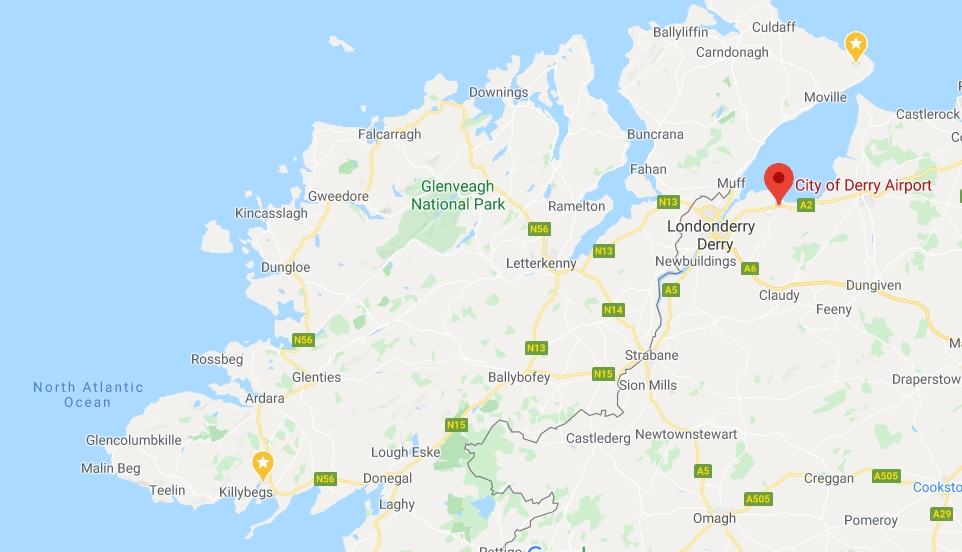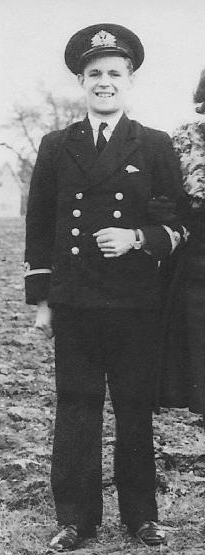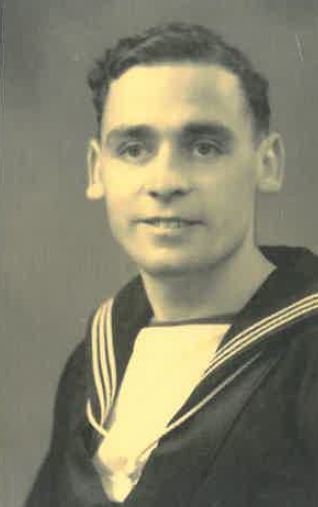Fairey Fulmar, Co. Donegal, August 1941
The 27th of August 1941 would witness one of the stranger aircraft landings of the war.
In the early part of the war, the Royal Air Force and Royal
Navy struggled to keep a constant aerial watch on the vital
naval convoys that were the lifelines for the isolated United
Kingdom. Convoys in the Atlantic and elsewhere were
assailed at all times by attacking kriegsmarine U-boats and
surface vessels as well as Luftwaffe long range aircraft, in
particular the Focke Wulf Fw200 Condor based in Britanny and
Norway.
With a shortage of large fleet aircraft carriers and the idea
of small escort carriers in it infancy, one drastic measure
arrived at was the Fighter Catapult Ship (FCS). These
vessels were freighters on which was mounted a catapult
mechanism that could hold and launch a single engine fighter in
the event of an attack by enemy aircraft. Needless to say,
the aircraft could not land back on the ship and the pilots were
expected to make for land or ditch close the the convoy and seek
to be rescued. Four ships were converted into FCS
including the subject of this incident. Later, a larger
number of ships were modified to become Catapult Armed Merchant
Ships, or CAM Ships. A short history of the FCS and CAM
can be read here on the Britain at War website.
Thus the reason why on the 27 August 1941, two men of the Fleet
Air Arm found themselves landing on the beach at Tramore Strand,
Clogher near Ardara.
This aircraft had earlier launched from the HMS Ariguani to
intercept a German Fw200 aircraft which was stalking convoy
OS4. The convoy is sometimes referred to as OG84 but this
convoy did not sail until May 1942. The story of the
intercept is told in Ralph Barker's book, The Hurricats.
The pilot, who may have given first hand accounts to the author,
was just able to catch up the the German aircraft and fire a
long burst at it before it slipped into cloud. He then
chased it for many miles until bad weather and fuel required him
to break off and make for land. He and his telegraphist
air gunner found themselves on the Irish coast but effectively
lost. He elected therefore to land on a convenient sandy
beach at about 13:10 local time.
A man visiting the area, John Cochrane, met the crew on
the beach, showed them were they were on their maps and helped
to turn them about on the beach. Prior to their having
spoken to him, they had burned documents in the dunes probably
expecting to be arrested and perhaps interned. Taking off
again at about 13:55, the aircraft flew onto the Eglinton base
in Northern Ireland which was only being built at that
time. The Irish Army report on this incident recorded that
the weather was extremely bad, with heavy rain and strong
wind. A witness to the landing, a Joseph Harkin from
Kiltoorish, reported on seeing the roundals and the number 4072
on the aircraft.
Since neither the Irish Army or Gardai were able to make it to
the beach before the pilot elected to chance flying to Eglinton,
the Irish Army report contains no details of the crew.
Thus one has to turn to Royal Navy records and an early
unexpected source was the 1943 book, Fleet Air Arm. This
contains an account of the launch and intercept and the landing
at Eglinton. It however leaves out mention of the Irish
Beach landing.

Mainy tellings of this event in books and local lore suggest
that the aircraft was refueled with 'petrol' gathered by the
locals on the beach. There is no mention in this report of
fuel being supplied, had any of the authorities known of the
landing its likely the crew would have been interned. Any
fuel available to hand would likely not have been suitable for
the Merlin engine of the Fulmar in anycase.

Following gleaned from FAAOA Newsheet of Jan 91. Pick the bones
from it as it suits you.
Commander Maurice A BIRRELL DSC RN Rtd
Maurice Birrell died on 28 Oct 90 at the age of 69 after
a varied career as a pilot which lasted from 39 until he
retired as a Cdr in 70. In June 40 he was one of 58 RN
pilots loaned to the RAF and flew Hurricanes with 79 sqdn from
Biggin Hill_ after 2 weeks the sqdn was withdrawn from ops and
he returned to RN service. He joined 804 sqdn at
Hatson flying Gladiators in defence of Scapa Flow.
Later in 40 the sqdn reequipped with Grumman Martlets(
Wildcats) the first RN sqdn to have them.
There were many engine failures with the early Martlets;
Birrell survived a nasty crash near Skeabrae. 804
reformed to provide pilots for Fighter Catapult Ships
(converted merchantmen fitted with rocket propelled
catapults). His first ship, Michael E, was
torpedoed on 27 May 40, sinking on 1 June,and he spent 20
hours in a lifeboat before being picked up. In Aug
41 Birrell was in HMS Ariguani and on 27 Aug was catapulted in
a Fulmar against a FW Condor off the Irish coast. He
landed on the long sandy beach at Ardara, Co Donegal. He
took off and landed at the still being built
Eglinton. In October still in Ariguani when
she was torpedoed 4000 miles west of Cape St Vin - more time
in a lifeboat. For the remainder of the war he was
training pilots and preparing handling notes for new
aircraft. In 51 he joined 804 again as Senior
Pilot: he was awarded a DSC (!) . In 54 he trook command of
891 Sqdn flying Vampires and SeaVenoms from Ark Royal
and Halfar, Malta. In 62 he was Commander (Air) at
Halfar. He retired in 70 and settled down at Sherborne
on Dorset. His first wife drowned in a yachting
accident: his second wife died in 86. In late years he
suffered two strokes: he is survived by two sons f rom his
first marriage.
 The man occupying the
back seat of Fulmar N4072 that day in 1941 was Donald
Sykes. Donald was born in 1915 in Maresden, Yorks to XXX
and XXX.
The man occupying the
back seat of Fulmar N4072 that day in 1941 was Donald
Sykes. Donald was born in 1915 in Maresden, Yorks to XXX
and XXX.
At the time of the landing in Ireland of Fulmar N4072, Donald's
service record places him posted to HMS Caroline (804 Sqdn) from
2 April to 16 Sep 1941. HMS Caroline referred to the ship
bearing that name, but which served as the static but floating
head quarters of the Royal Navy in Belfast, Northern
Ireland. In time, HMS Caroline also grew to include
various buildings in the city that housed the expanded
administration of the head quarters.
The history recorded for N4072 in the book Fleet Air Arm
Aircraft 1939 to 1945 lists Donald as being on board the
aircraft on 11 May 1941 when he catapulted from Ariguani on a
failed attempt to intercept a Fw200.
His service records lay out his carious postings for the
remainder of the war. In September 1941, he was posted to
HMS Daedulus, the shore establishment at Lee -on-Solent.
From there he spent a month from October to November 1941 with
794 Squadron. The remainder of the postings from December
1914 are to shore based establishments in and around
Scotland. It is not clear if he was involved in flying
duties during that year. He sailed for Trinidad in
December 1943.
His daughter remembered the following of her fathers career:
Eventually he was grounded due to a problem with his ear which
caused him to have major surgery. After he was grounded he
served the rest of the war in Trinidad.
On May 20th 1945 a Donald Sykes FAA/FX.97083 Royal Navy
sailed into New York from Trinidad on the SS Settler with other
RN personnel. He was at that time 30 years and 4 months
old and born in Huddersfield. His dauther remembers him
buying for her a pair of miniture boxing gloves from Jack
Dempseys bar in New York. Donald left the Royal Navy in
Decemer 1945.
Donald passed away in July 1970 in Huddersfield.
Compiled by Dennis Burke, 2019.
